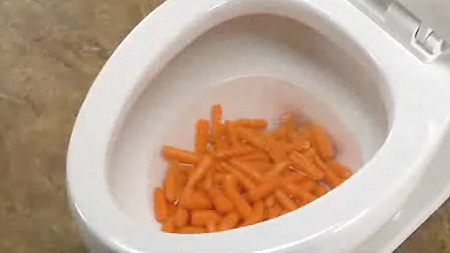Are You Permitted to Dispose of Food Waste in the Toilet?
Are You Permitted to Dispose of Food Waste in the Toilet?
Blog Article
Are you in search of related information around Flushing Food Down the Toilet??

Introduction
Many individuals are typically faced with the predicament of what to do with food waste, especially when it pertains to leftovers or scraps. One common inquiry that develops is whether it's okay to flush food down the toilet. In this article, we'll look into the reasons why individuals might take into consideration flushing food, the consequences of doing so, and alternate approaches for appropriate disposal.
Reasons that individuals could think about purging food
Lack of recognition
Some people may not understand the prospective damage brought on by purging food down the toilet. They may incorrectly believe that it's a harmless practice.
Comfort
Flushing food down the commode might appear like a quick and simple service to dealing with undesirable scraps, particularly when there's no nearby trash can available.
Negligence
In many cases, individuals might just choose to flush food out of large idleness, without thinking about the effects of their activities.
Consequences of flushing food down the toilet
Ecological effect
Food waste that ends up in rivers can contribute to pollution and injury marine ecological communities. Furthermore, the water made use of to flush food can stress water resources.
Pipes problems
Purging food can cause clogged pipelines and drains, creating expensive pipes repair services and inconveniences.
Kinds of food that need to not be flushed
Fibrous foods
Foods with fibrous textures such as celery or corn husks can obtain tangled in pipelines and create blockages.
Starchy foods
Starchy foods like pasta and rice can absorb water and swell, bring about obstructions in pipelines.
Oils and fats
Greasy foods like bacon or cooking oils need to never ever be flushed down the bathroom as they can solidify and cause obstructions.
Proper disposal methods for food waste
Using a garbage disposal
For homes equipped with waste disposal unit, food scraps can be ground up and purged with the plumbing system. However, not all foods appropriate for disposal in this way.
Recycling
Certain food product packaging materials can be reused, lowering waste and decreasing environmental influence.
Composting
Composting is an environment-friendly way to deal with food waste. Organic products can be composted and used to enhance dirt for gardening.
The value of appropriate waste monitoring
Reducing environmental damage
Appropriate waste monitoring practices, such as composting and recycling, assistance decrease air pollution and maintain natural deposits for future generations.
Safeguarding plumbing systems
By staying clear of the technique of flushing food down the toilet, homeowners can avoid costly plumbing repair work and preserve the stability of their plumbing systems.
Final thought
Finally, while it might be alluring to purge food down the bathroom for comfort, it is very important to understand the potential repercussions of this action. By embracing appropriate waste monitoring techniques and dealing with food waste properly, people can contribute to healthier plumbing systems and a cleaner environment for all.
THINK TWICE BEFORE FLUSHING FOOD DOWN YOUR TOILET IN FALLBROOK CA
Let’s be honest, we’re really supposed to be tossing rotten or leftover food in the compost bin or trash can. But many people like to place scraps of food down the drain of, say, their kitchen sink. That’s why the garbage disposal was invented: so we can continue to place certain foods down the drain without clogging our drain in the process. Smart.
But not all of us have the luxury of having a garbage disposal installed. So, you might continue to shove food down your sink drain anyway – or worse: you might flush them down your toilet! If you’re guilty of doing the latter, you’re going to want to stop, and here’s why:
Toilet Drains Aren’t Designed to Handle Food!
There’s your answer: food just doesn’t belong in your toilet. It may seem like your toilet drain is wider than the drains of your sinks, but truth be told, that isn’t actually the case. The narrower pipes of your toilet leave your plumbing at risk for clogging if you do happen to flush your food. In addition, food doesn’t break down as quickly that toilet paper and human waste do. In turn, this leaves your toilet at risk for a nasty clog.
Although a flush of a tiny pinch of food every now and then isn’t going to completely damage your toilet, there are certain foods that should absolutely not be flushed in your toilet at all. These include starchy foods like mashed potatoes, grains, hard pieces of food that are slow to break down, and fats and oils.
The latter categories of food are particularly problematic as they may harden, expand as they absorb water, break down slowly in your system, or generally create the perfect obstruction with their gelatinous composition. These are all things you don’t want in your plumbing system!
Experiencing a Toilet Clog?
Nobody’s perfect, and we all make mistakes. Sometimes one of the mistakes people make is flushing food down their toilet and later realizing that it wasn’t the best thing to do once they see that their toilet is now clogged. Uh-oh!

I was made aware of that write-up on Is it safe to flush food (especially rice) down the toilet? through someone on our other web address. Sharing is nice. Helping others is fun. Thank you for going through it.
Click For More Information Report this page